Background Art For Disney’s Winnie The Pooh
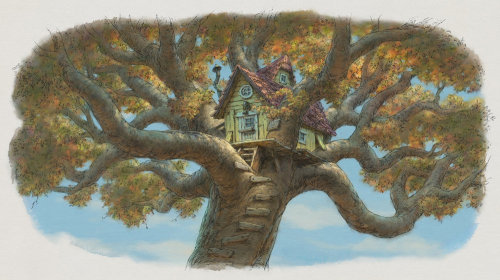








Background art for Disney’s Winnie the Pooh
More Posts from Trainwrecks-waiting and Others
Watching Pen15 and seeing them as little girls, even though they’re played by these grown women, had me bawling my eyes out. Watching the popular girls be racist to Maya and then her mimicking them and not knowing what it meant until her brother said something. Then when Anna realized she was part of the problem and she should’ve spoke up and she apologized. The show is so wholesome, and sad.
Anna going through her parents divorce and how it’s affecting her life, the relationship with her father once he’s moved out. Her feeling like she has to step up and take care of him, while also being told not to, and being met with no appreciation. It’s just so much like what 13 was for me with my parents splitting that it breaks my heart for her.
This show makes you cry and laugh, and sometimes Maya’s outbursts are almost hard to watch, but they’re just little girls.
pen15 is honestly like really fucking funny but also really fucking hard to watch sometimes because of how they capture what it was like to be a little girl in the early 2000s, like....even the fucking weirdness of how maya masturbates lmfao, but also just the very deep kind of sadness that comes with having grown up a girl and watching it back as an adult woman
i think this is from the creator of courage.

Pen15 season 1: lol remember AIM???
Pen15 season 3: your childhood will end when an older boy asks you to come to his room. you will follow him and you will always, always remember the darkness of the hallway. there are some things a best friend cannot save you from, even when she is saving you. also remember tamagotchi?

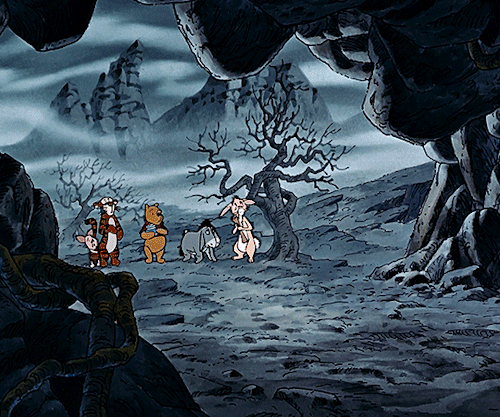
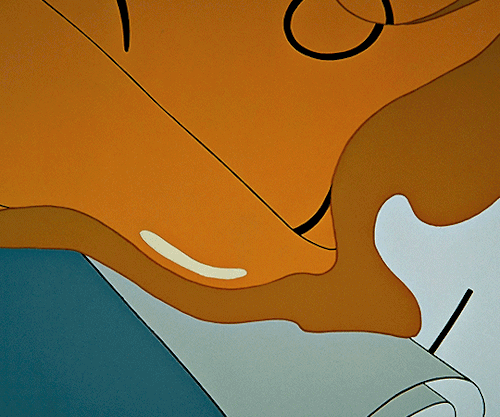
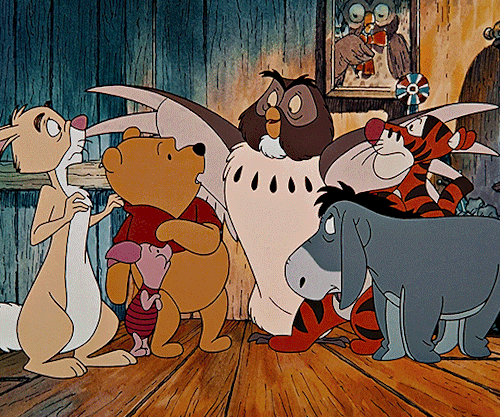

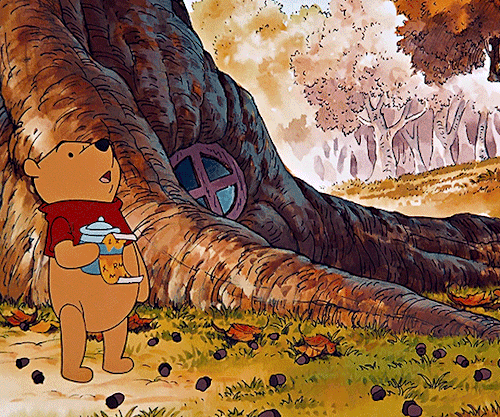
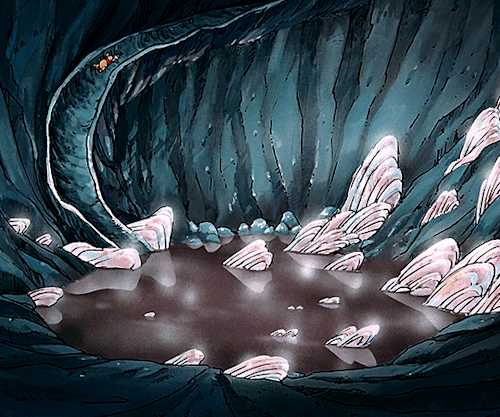


Oh, come, come, come. Without a monster or two it’s hardly a quest. Merely a gaggle of friends wandering about.
Pooh’s Grand Adventure: The Search for Christopher Robin (1997)
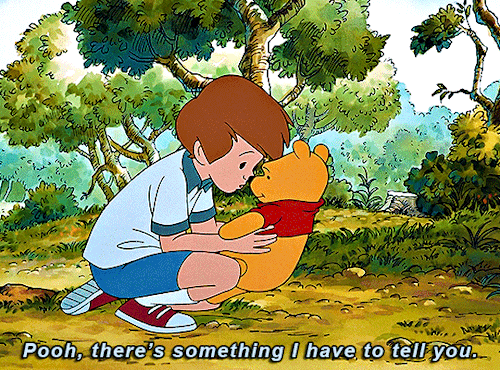


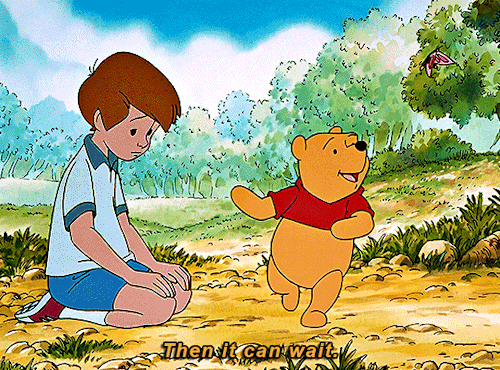


Pooh’s Grand Adventure: The Search for Christopher Robin (1997) dir. Karl Geurs
Film Analyses/Reviews
The Sacraments of Genre: Coppola, DePalma, Scorsese
Operatic Style and Structure in Coppola's "Godfather Trilogy" (Pt. I) (Pt. II)
The Tragedy of Michael Corleone in "The Godfather: Part III"
Animated Nature: Aesthetics, Ethics, and Empathy in Miyazaki Hayao's Ecophilosophy
The Precarious Politics of Precious: A Close Reading of a Cinematic Text (X)
As I Lay Dying: Violence and Subjectivity in Tarantino’s Reservoir Dogs (X)
Shifting Gears and Paradigms at the Movies: Masculinity, Automobility, and the Rhetorical Dimensions of "Mad Max: Fury Road"
Review: Godfather: The Intimate Francis Ford Coppola
Two Thousand Light Years from Home: Scorsese's Big CASINO (X)
TIME PIECES: WONG KAR-WAI AND THE PERSISTENCE OF MEMORY (X)
Matter out of Place: Carnival, Containment, and Cultural Recovery in Miyazaki's "Spirited Away" (X)
Disney's Moana, the Colonial Screenplay, and Indigenous Labor Extraction in Hollywood Fantasy Films
Viewing Sinophone Cinema Through a French Theoretical Lens: Wong Kar-wai's "In the Mood For Love" and 2046 and Deleuze's "Cinema" (X)
The Parallelism of the Fantastic and the Real: Guillermo del Toro’s Pan’s Labyrinth/El Laberinto del fauno and Neomagical Realism (X)
"Back to the Future": Oedipus as Time Traveller ("Retour vers le futur": Oedipe, voyageur du temps)
Beyond the Male Romance: Repetition as Failure and Success in Apocalypse Now
Beautiful Friendship: Masculinity and Nationalism in "Casablanca"
GIRL POWER: BACK TO THE FUTURE OF FEMINIST SCIENCE FICTION WITH INTO THE FOREST AND ARRIVAL
"Leave the Gun. Take the Cannoli." How Machiavelli's The Prince Exemplifies the Gangster in The Godfather and A Bronx Tale
Film as Literature: TWO SCREENPLAYS (Taxi Driver, Goodfellas)
Where Did the Goodfellas Learn How to Cook? Gender, Labor, and the Italian American Experience
Goodfellas Review (1991)
Where is the Bawdy? Falstaffian Politics in Gus Van Sant's "My Own Private Idaho" (X)
The Filmmaker as DJ: Martin Scorsese’s Compiled Score for Casino (1995)
EAST Meets WEST: "Casablanca vs. The Seven Samurai"
The Power of Adaptation in "Apocalypse Now"
Animalizing "Jurassic Park's" Dinosaurs: Blockbuster Schemata and Cross-Cultural Cognition in the Threat Scene
Review: American Psycho
The Feminine Hero of The Silence of the Lambs (X)
"Fight Club'"s Queer Representations (X)
Tiny Life: Technology and Masculinity in the Films of David Fincher (X)
Complex Design in "The Empire Strikes Back" (X)
SAVAGE PLACES REVISITED: CONRAD'S "HEART OF DARKNESS" AND COPPOLA'S "APOCALYPSE NOW"
PORTRAITS OF THE POSTMODERN PERSON IN TAXI DRIVER, RAGING BULL, AND THE KING OF COMEDY
(Taxi Driver) (Raging Bull)
Homosexuality in "Dog Day Afternoon" (1975): Televisual Surfaces and a "Natural" Man (X)
Where Did All the Heroes Go? (Dog Day Afternoon)
Italian-Americans in Film: From Immigrants to Icons
God's Lonely Man: "Taxi Driver" in Script and Screen
A Slice of Delirium: Scorsese's "Taxi Driver" Revisited
Kafka on the Screen: Martin Scorsese's "After Hours" (X)
Stalking 'The Deer Hunter'
Gender, Genre, and Myth in "Thelma and Louise" (X)
Restaging the War: "The Deer Hunter" and the Primal Scene of Violence
"The Godfather, I and II": Patterns of Corruption (X)
Making the Milk into a Milkshake: Adapting Upton Sinclair's "Oil!" into P. T. Anderson's "There Will Be Blood"
Child of the Long Take: Alfonso Cuaron's Film Aesthetics in the Shadow of Globalization
THE SWOLLEN BOY: Paul Thomas Anderson's BOOGIE NIGHTS and Diggler Days
Love in Time: Julie Delpy, Ethan Hawke, and Richard Linklater's "Before" Films
Other
Al Pacino (X)
Lies and Loneliness: An Interview with Tony Leung Chiu Wai
Wong Kar-Wai (Interview)
Imagism and Martin Scorsese: Images Suspended and Extended
Docufictions: An Interview with Martin Scorsese on Documentary Film
Orson Welles: The Human Side of Genius
Eavesdropping On Female Voices: A WHO'S WHO OF CONTEMPORARY WOMEN FILMMAKERS (1987)
Disappearance of Elaine May
THE NON-DIEGETIC FALLACY: FILM, MUSIC, AND NARRATIVE SPACE
Hollywood Movie Dialogue and the "Real Realism" of John Cassavetes
THE WORK OF JOHN CASSAVETES: SCRIPT, PERFORMANCE STYLE, AND IMPROVISATION
The Adventure of Insecurity: The Films of John Cassavetes
Prospero's Muccs: The Meaning of Martin Scorsese's Italian American Dialect
Between Colorblind and Colorconscious: Contemporary Hollywood Films and Struggles Over Racial Representation
The Militarization of Marvel's Avengers
BEFORE AND AFTER "JAWS": CHANGING REPRESENTATIONS OF SHARK ATTACKS
Sound Doctrine: An Interview with Walter Murch
Made Men (Goodfellas, Mean Streets, Scorsese Interview)
Beautiful Resistance: The Early Films of Wong Kar-wai
Who Knew It Could Get Worse? When Nixon Haunted the New Hollywood
TV
Sticking Together, Falling Apart: "The Sopranos" and the American Moral Order
"Mad Men"'s Color Schemes: A Changing Palette of Working Women
ETHICAL UPLIFT, "NOT FOR NUTHIN" (Review: The Sopranos)
Writing
Story: Substance, Structure, Style by Robert Mckee
Dialogue - Robert McKee
THE WRITER’S JOURNEY Mythic Structure for Writers
The Art of Dramatic Writing
Anatomy of Story
Into the Woods
—-
(X) = corresponding tumblr post
East of Eden is a tale that is remarkably Stoic.
So far, I think this book is a masterwork. Just thinking about it makes me weep. It's a contemporary Stoicism story with a sprinkle of everything else tossed in for good measure: Nihilism, Absurdism, Existentialism, and so on. John Steinbeck has just become one of my favourite authors. At one point in the book, one of the characters fondly flips through Meditations. Some quotes: “You're going to pass something down no matter what you do or if you do nothing. Even if you let yourself go fallow, the weeds will grow and the brambles. Something will grow.”
“We have only one story. All novels, all poetry, are built on the neverending contest in ourselves of good and evil. And it occurs to me that evil must constantly respawn, while good, while virtue, is immortal. Vice has always a new fresh young face, while virtue is venerable as nothing else in the world is.”
“I believe that there is one story in the world, and only one, that has frightened and inspired us so that we live in a Pearl White serial of continuing thought and wonder. Humans are caught - in their lives, in their thoughts, in their hunger and ambitions, in their avarice and cruelty, and in their kindness and generosity too - in a net of good and evil. I think this is the only story we have and that it occurs on all levels of feeling and intelligence. Virtue and vice were warp and woof of our first consciousness, and they will be the fabric of our last, and this despite any changes we may impose on field and river and mountain, on economy and manners. There is no other story. A man, after he has brushed off the dust and chips of life, will have left only the hard, clean questions: Was it good or was it evil? Have I done well - or ill?” “The Hebrew word, the word timshel - 'Thou mayest' - that gives a choice. It might be the most important word in the world. That says the way is open... Why does that make a man great... He can choose his course and fight it through and win... I have a new love for that glittering instrument, the human soul. It is a lovely and unique thing in the universe. It is always attacked and never destroyed - because 'Thou mayest.”

Buster Keaton filming the famous falling house stunt for Steamboat Bill, Jr. (1927)
-
 rendezvous19y reblogged this · 2 weeks ago
rendezvous19y reblogged this · 2 weeks ago -
 madartjj liked this · 3 weeks ago
madartjj liked this · 3 weeks ago -
 undermerge reblogged this · 1 month ago
undermerge reblogged this · 1 month ago -
 kaffeeaddictandproud liked this · 1 month ago
kaffeeaddictandproud liked this · 1 month ago -
 chernikammm reblogged this · 2 months ago
chernikammm reblogged this · 2 months ago -
 sweetandsourgloss liked this · 3 months ago
sweetandsourgloss liked this · 3 months ago -
 somestupidsworld reblogged this · 3 months ago
somestupidsworld reblogged this · 3 months ago -
 radbeardtastemaker liked this · 4 months ago
radbeardtastemaker liked this · 4 months ago -
 sweet-caress-of-twilight reblogged this · 4 months ago
sweet-caress-of-twilight reblogged this · 4 months ago -
 visoreyes liked this · 4 months ago
visoreyes liked this · 4 months ago -
 visoreyes reblogged this · 4 months ago
visoreyes reblogged this · 4 months ago -
 tara-58 reblogged this · 4 months ago
tara-58 reblogged this · 4 months ago -
 tara-58 liked this · 4 months ago
tara-58 liked this · 4 months ago -
 beenwaitingonthatsunshine liked this · 4 months ago
beenwaitingonthatsunshine liked this · 4 months ago -
 yushauwu liked this · 5 months ago
yushauwu liked this · 5 months ago -
 iloveanimationyall reblogged this · 5 months ago
iloveanimationyall reblogged this · 5 months ago -
 chalet2mi liked this · 5 months ago
chalet2mi liked this · 5 months ago -
 annak3s33 liked this · 6 months ago
annak3s33 liked this · 6 months ago -
 seray125 liked this · 6 months ago
seray125 liked this · 6 months ago -
 rayne-showers reblogged this · 6 months ago
rayne-showers reblogged this · 6 months ago -
 hoosierintherye liked this · 7 months ago
hoosierintherye liked this · 7 months ago -
 annita89toyqw9ih liked this · 7 months ago
annita89toyqw9ih liked this · 7 months ago -
 mikithewooloo reblogged this · 7 months ago
mikithewooloo reblogged this · 7 months ago -
 arthur-lesters-liver liked this · 8 months ago
arthur-lesters-liver liked this · 8 months ago -
 finleysarts reblogged this · 9 months ago
finleysarts reblogged this · 9 months ago -
 finleysarts liked this · 9 months ago
finleysarts liked this · 9 months ago -
 alexandrajewett liked this · 10 months ago
alexandrajewett liked this · 10 months ago -
 disqo-cowboy liked this · 10 months ago
disqo-cowboy liked this · 10 months ago -
 yellowtigerboat liked this · 10 months ago
yellowtigerboat liked this · 10 months ago -
 beingrestless liked this · 10 months ago
beingrestless liked this · 10 months ago -
 lilacgeode reblogged this · 10 months ago
lilacgeode reblogged this · 10 months ago -
 wellarrangedconstellation reblogged this · 10 months ago
wellarrangedconstellation reblogged this · 10 months ago -
 dvcky-duck liked this · 11 months ago
dvcky-duck liked this · 11 months ago -
 venomoth liked this · 11 months ago
venomoth liked this · 11 months ago -
 bluetearsofhappiness liked this · 11 months ago
bluetearsofhappiness liked this · 11 months ago -
 weeeitsmeee liked this · 11 months ago
weeeitsmeee liked this · 11 months ago -
 edelfliss liked this · 11 months ago
edelfliss liked this · 11 months ago -
 ngaikuu liked this · 1 year ago
ngaikuu liked this · 1 year ago -
 bunniebo liked this · 1 year ago
bunniebo liked this · 1 year ago -
 fiaistired reblogged this · 1 year ago
fiaistired reblogged this · 1 year ago -
 fiaistired liked this · 1 year ago
fiaistired liked this · 1 year ago -
 grendallmayo reblogged this · 1 year ago
grendallmayo reblogged this · 1 year ago -
 absinthe-of-midnight reblogged this · 1 year ago
absinthe-of-midnight reblogged this · 1 year ago -
 semisolidmind liked this · 1 year ago
semisolidmind liked this · 1 year ago -
 turtleskele liked this · 1 year ago
turtleskele liked this · 1 year ago -
 tainteddream reblogged this · 1 year ago
tainteddream reblogged this · 1 year ago -
 tainteddream liked this · 1 year ago
tainteddream liked this · 1 year ago -
 gae-ta reblogged this · 1 year ago
gae-ta reblogged this · 1 year ago
professional lurker, i promise i won’t be weird18+ content warning if you’re gonna dig thru my account
49 posts







